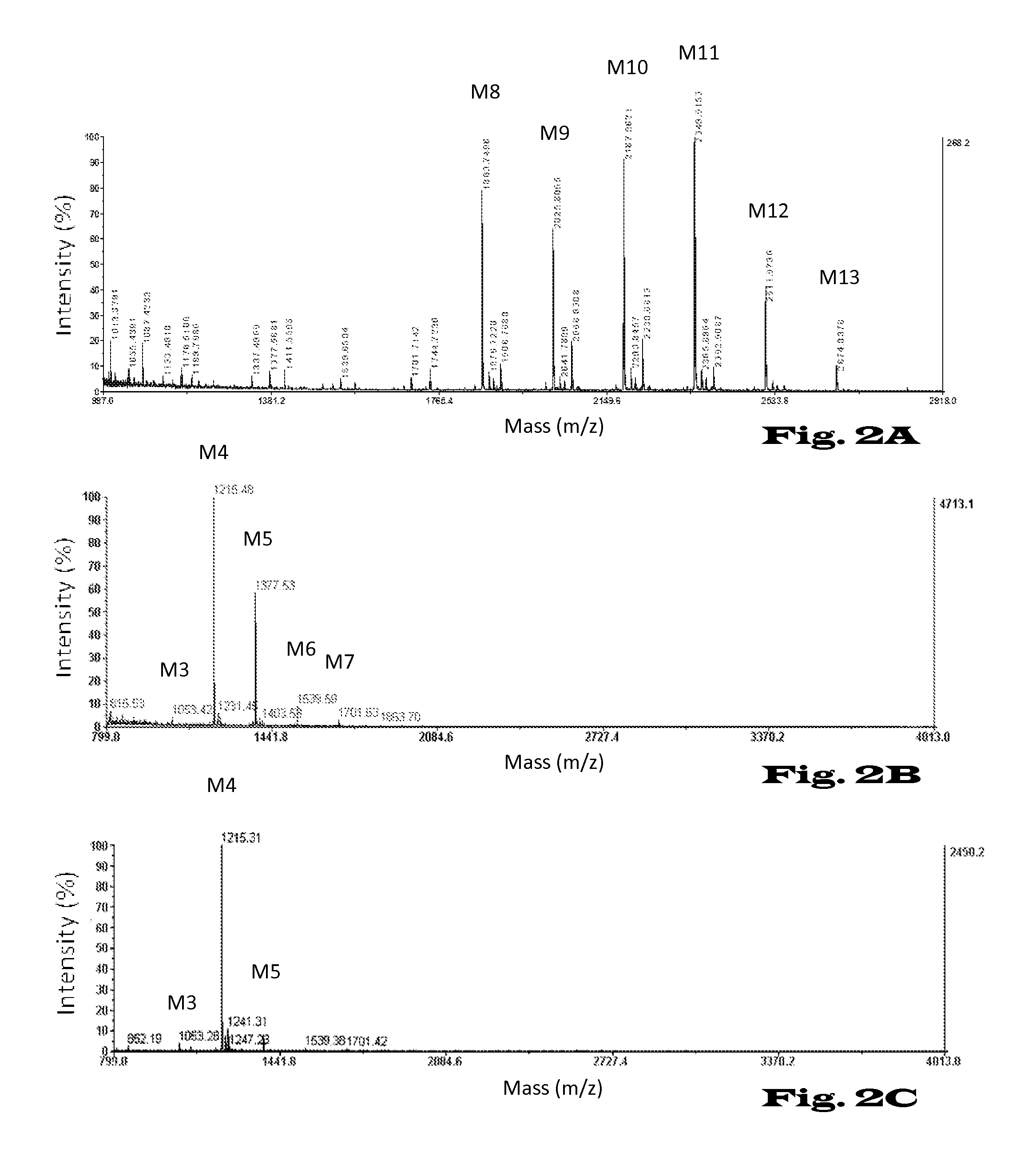Glycosylation of proteins in host cells
a technology of protein glycosylation and host cells, which is applied in the field of glycosylation of proteins in host cells, can solve the problems of natural microheterogeneity in protein glycosylation, low productivity, and production of recombinant proteins, and achieves high therapeutic efficacy, without triggering unwanted side effects
- Summary
- Abstract
- Description
- Claims
- Application Information
AI Technical Summary
Benefits of technology
Problems solved by technology
Method used
Image
Examples
examples
[0626]1. Generation of Δalg3 Δalg11 Strain
[0627]The entire ALG11 open reading frame was replaced in wild-type cells SS328×SS330 by integration of a PCR product containing the S. cerevisiae HIS3 locus. The resulting strain (MATa / α ade2-201 / ade2-201 ura3-52 / ura3-52 his36200 / his36200 tyr1 / + lys2-801 / +Δalg11::HIS3 / +) was sporulated and tetrads were dissected to obtain a Δalg11 haploid strain (MATα ade2-201 ura3-52 his36200 Δalg11::HIS3). The Δalg11 haploid strain was mated with a Δalg3 strain (MATa Δalg3::HIS3 ade2-101 his36200 lys2-801 ura3-52). The resulting diploid strain (MATa / α ade2-201 / ade2-201 ura3-52 / ura3-52 his-3Δ200 / his36200 lys2-801 / +Δalg3::HIS3 Δalg11::HIS3 / +) was sporulated and tetrads were dissected on YPD plates containing 1 mol / l sorbitol to obtain the haploid Δalg3Δalg11 double mutant strain (MATα ade2-101 ura3-52 his36200 lys2-801 Δalg3::HIS3).
2. Generation of Δalg11 Δalg3 Δmnn1 triple mutant strain
[0628]The MNN1 locus was deleted in yeast wild-type cells (SS330) using...
PUM
| Property | Measurement | Unit |
|---|---|---|
| OD | aaaaa | aaaaa |
| OD | aaaaa | aaaaa |
| pH | aaaaa | aaaaa |
Abstract
Description
Claims
Application Information
 Login to View More
Login to View More - R&D Engineer
- R&D Manager
- IP Professional
- Industry Leading Data Capabilities
- Powerful AI technology
- Patent DNA Extraction
Browse by: Latest US Patents, China's latest patents, Technical Efficacy Thesaurus, Application Domain, Technology Topic, Popular Technical Reports.
© 2024 PatSnap. All rights reserved.Legal|Privacy policy|Modern Slavery Act Transparency Statement|Sitemap|About US| Contact US: help@patsnap.com










